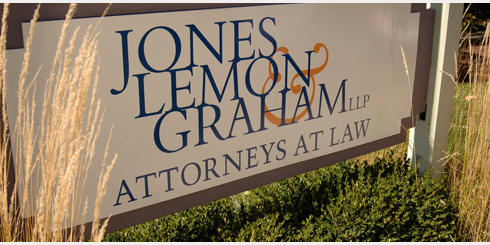
by Christopher Graham and Joseph Kelly
BancInsure, Inc v. Highland Bank (D. Minn. Sep. 23, 2013)
BancInsure sought a declaratory judgment against its insured, Highland Bank, that the Bank’s loss is not covered under the Financial Institution Bond BancInsure issued to the Bank.
In 2005, Equipment Acquisition Resources (“EAR”) and First Premier Capital, LLC entered into an equipment lease under which First Premier would provide manufacturing equipment to EAR. First Premier secured personal guarantees from EAR’s principals as a condition precedent to the lease.
In 2006, First Premier went to the Bank on EAR’s behalf seeking to borrow $3 million to finance the lease. First Premier and the Bank entered into a “Collateral Assignment of Lease Payments and Equipment” agreement under which First Premier assigned to the Bank “rental payments due or to become due under the Lease” and all of First Premier’s “rights, title and interest in and to the personal property subject to the Lease.”
Before entering into the agreement with First Premier, the Bank: didn’t contact EAR or its principals; didn’t conduct a background check on EAR’s principals — despite First Premier informing the Bank about one of the principal’s prior conviction for lease fraud; and didn’t inspect the equipment or otherwise determine its liquidation value.
After 20 months or so, EAR stopped making payments. The Bank then learned that the leased equipment didn’t exist and that the non-existent equipment was pledged to multiple lenders. The Bank also learned that the guaranty of one of EAR’s principals was likely forged.
In January 2010, Highland Bank sued First Premier for default under their agreement. The Bank won but was unable to collect on its judgment. The Bank subsequently submitted a Proof of Loss to Bancinsure under the FIB seeking coverage, in pertinent part, under Insuring Agreement E which provided:
Loss resulting directly from the Insured having, in good faith, for its own account or for the account of others, (1) acquired, sold or delivered, given value, extended credit or assumed liability on the faith of any original … (f) Corporate, partnership or personal Guarantee, [which] … (i) bears a signature of any maker, drawer, issuer, endorser, assignor, lessee, transfer agent, registrar, acceptor, surety, guarantor, or of any person signing in any other capacity which is a Forgery, … (2) guaranteed in writing or witnessed any signature upon any transfer, assignment, bill of sale, power of attorney, Guarantee, endorsement or any items listed in (1)(a) through (h) above. This includes loss resulting directly from a registered transfer agent accepting or instructions concerning transfer of securities by means of a medallion seal, stamp, or other equipment apparatus which identifies the Insured as guarantor, as used in connection with a Signature Guarantee Program, but such use or alleged use of said medallion seal, stamp, or other equipment apparatus was committed without the knowledge or consent of the Insured, and the Insured is legally liable for such loss, (3) acquired, sold, or delivered, given value, extended credit or assumed liability on the faith of any item listed in (1)(a) through (d) above which is a Counterfeit. Actual physical possession of the items listed in (1)(a) through (i) above by the Insured, its correspondent bank or other authorized representative is a condition precedent to the Insured’s having relied on the faith of such items. A mechanically reproduced facsimile signature is treated the same as a handwritten signature.
Bancinsure denied coverage because the Bank didn’t have actual physical possession of the guaranty. That same day, Bancinsure filed suit seeking a declaration of no coverage.
The Bank successfully moved for partial summary judgment as to whether First Premier was its “authorized representative” such that the “actual physical possession” requirement of Insuring Agreement E was met.
The Bank and BancInsure subsequently filed competing motions for summary judgment.
Loss “resulting directly from”
BancInsure argued there was no loss “resulting directly from” the Bank’s extension of credit on the faith of the forged guaranty, because irrespective of the forgery, the Bank would’ve suffered a loss.
The Bank argued that there was a loss “resulting directly from” its extension of credit on the faith of the guaranty because the guaranty caused it to enter into the transaction and extend credit where it otherwise wouldn’t have.
The court — citing to Alerus Fin. Nat’l Ass’n v. St. Paul Mercury Ins. Co., No. A11-680 (Minn. Ct. App. Jan 30, 2012) noted that “loan loss is not directly caused by reliance on forgeries constituting or referencing collateral when the collateral is worthless at the time of the loan.” The court then found that the Bank’s loss resulted directly not from the forged guaranty, but from the worthlessness of the collateral and guaranty. There was no equipment and the guarantor had no assets.
Extended credit…on the faith of any original…personal guarantee
The Bank argued that it relied on the faith of the guaranty in extending credit. BancInsure countered that the Bank never had a legal interest in the guaranty (given to First Premier) and that it never examined the original guaranty. The Court agreed with BancInsure because: (1) the guaranty was executed by First Premier and the guarantor and promised repayment to First Premier; (2) the lease was executed between EAR and First Premier without reference to the Bank; (3) the agreement between First Premier and the Bank only transferred First Premier’s interest in the rent due. The court accordingly found that the Bank didn’t extend credit on the faith of the guaranty.
Conclusion
The court granted BancInsure a declaration that there was no coverage under Insuring Agreement E because the loss didn’t directly result from the forged guaranty and the Bank didn’t extend credit on the faith of the forged guaranty.
The court also found that the Bank wasn’t entitled to coverage under the “reasonable expectations” doctrine.
Lastly, the court found that since there’s no coverage, the Bank’s claim for breach of good faith and fair dealing fails.
Tags: Minnesota, Financial Institution Bond, Insuring Agreement E, forgery










